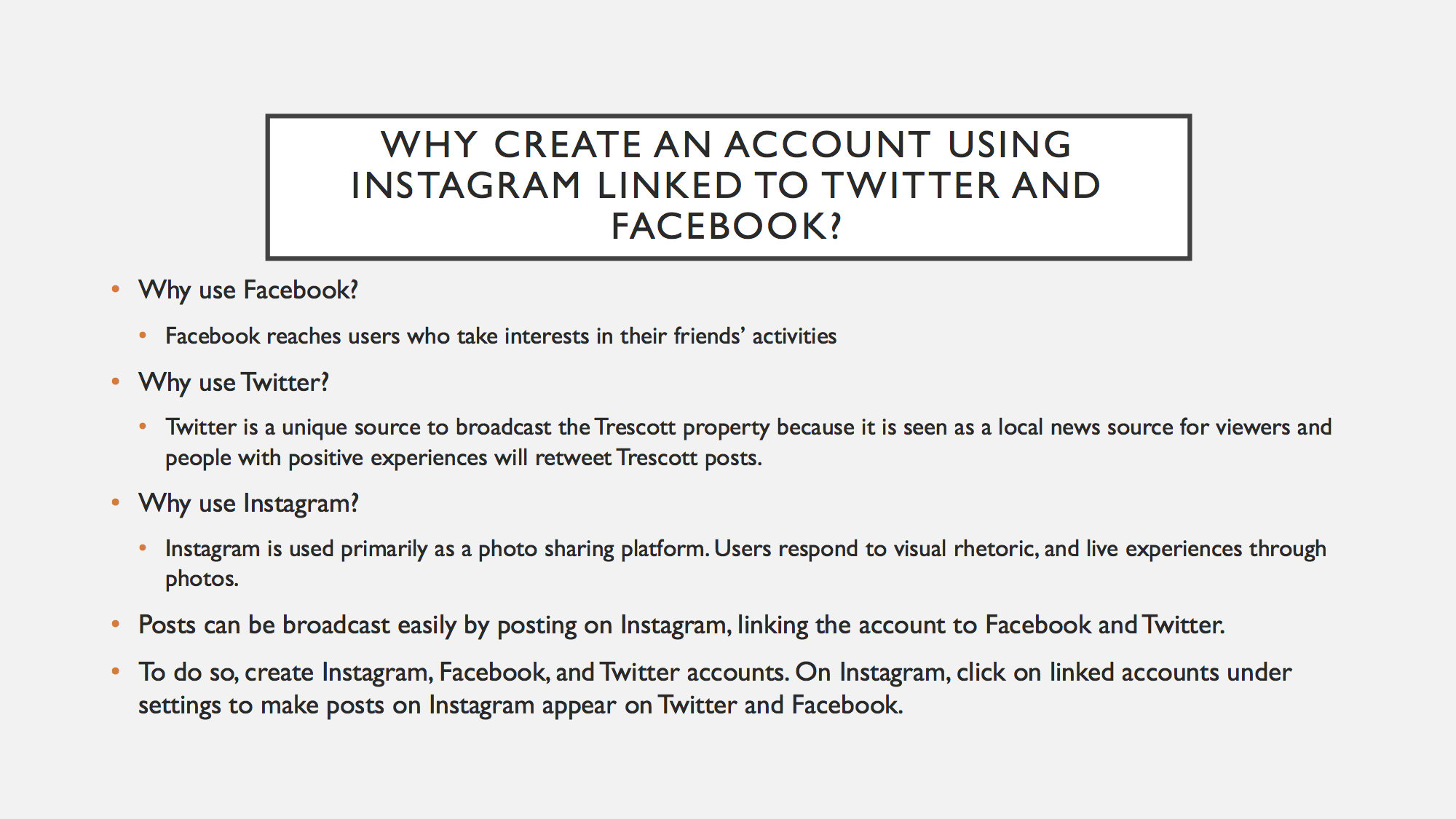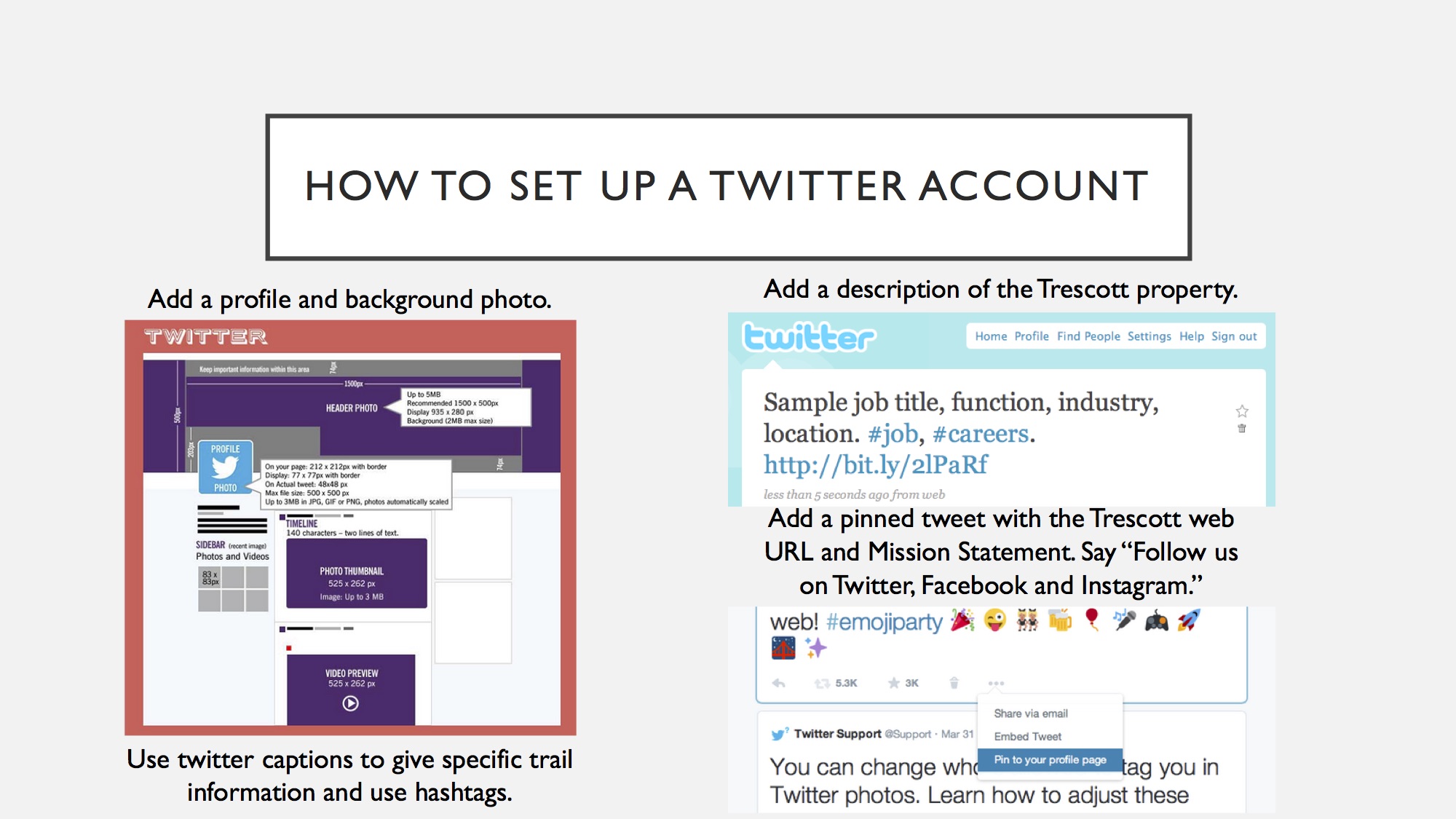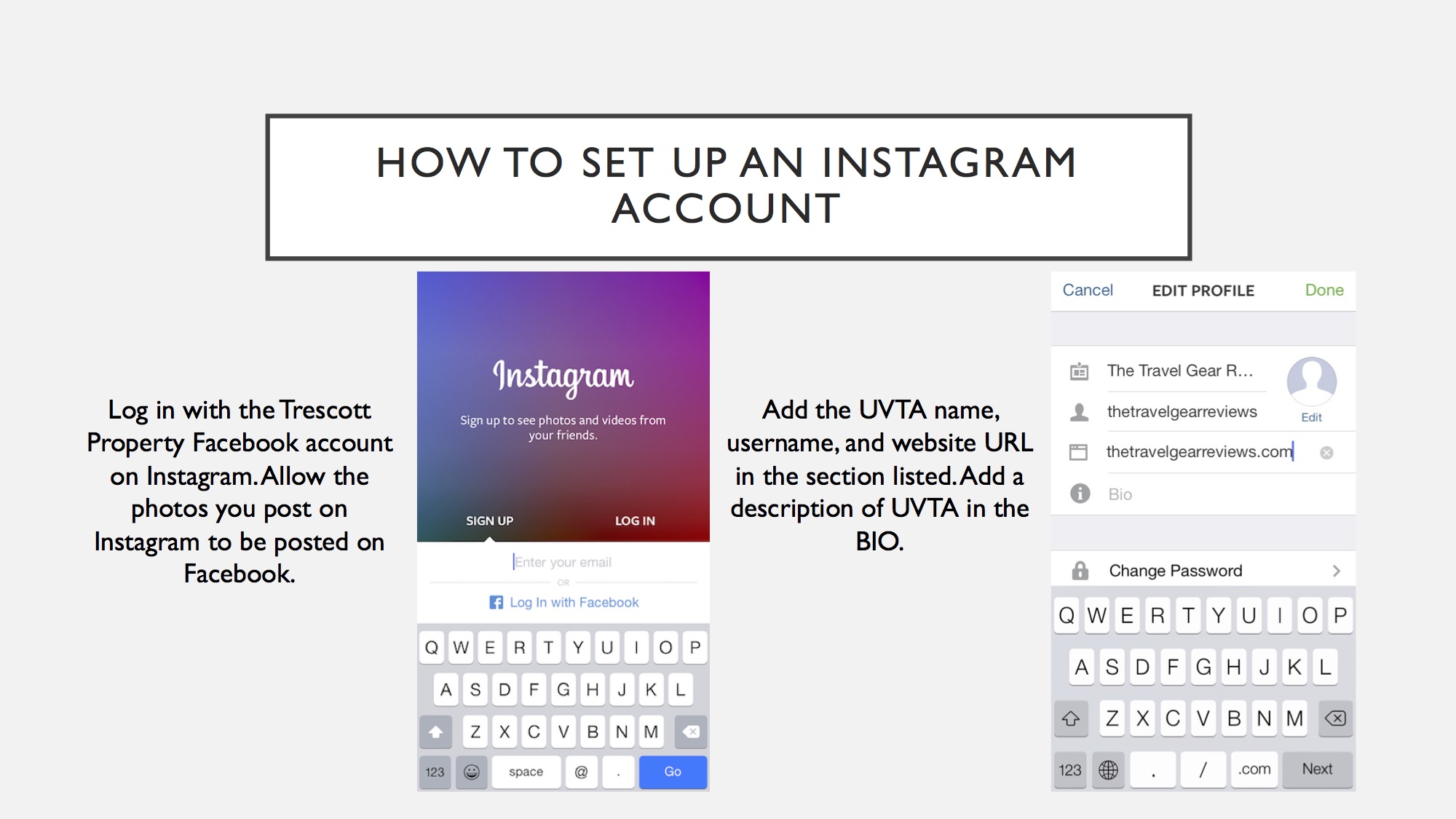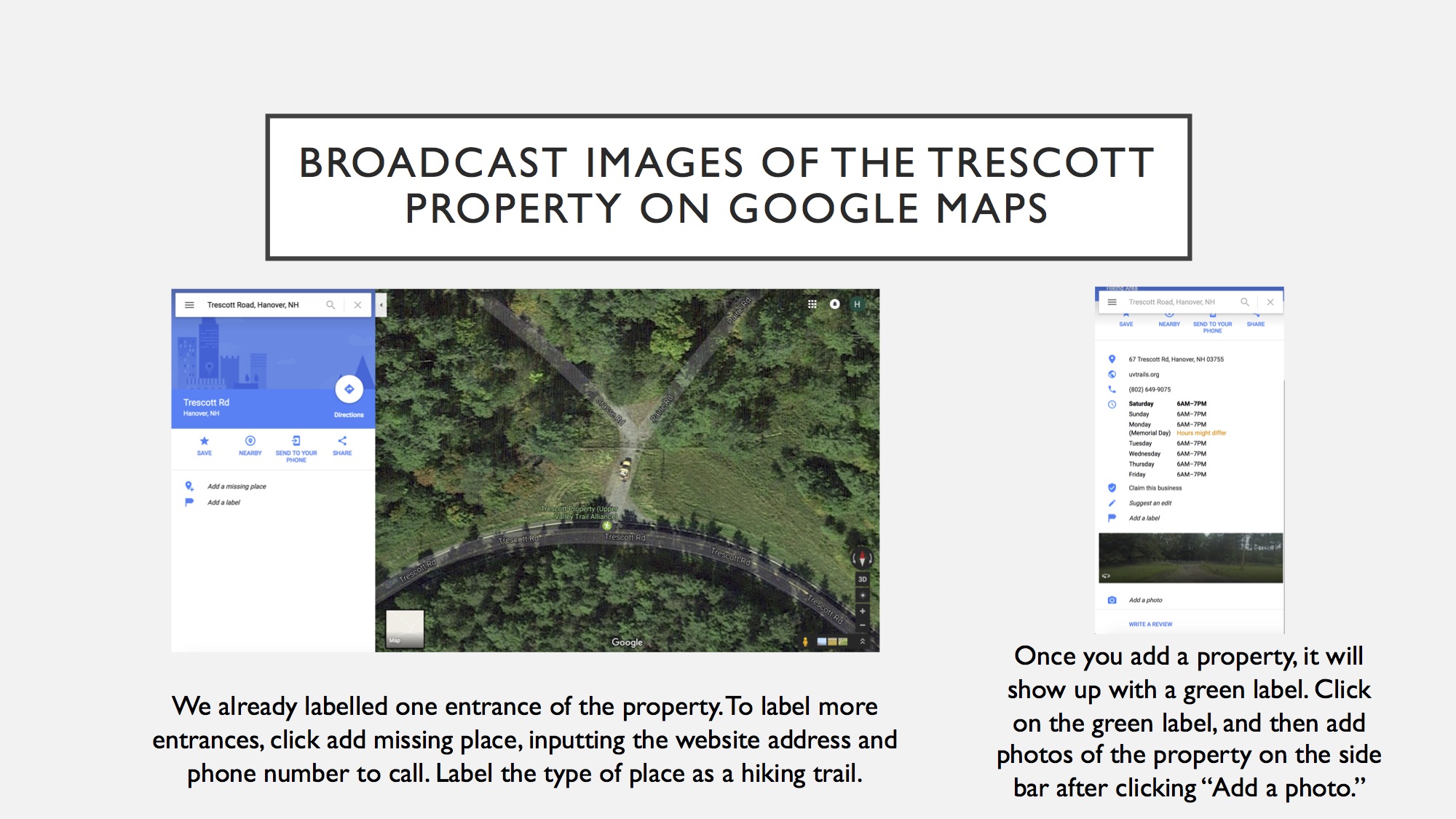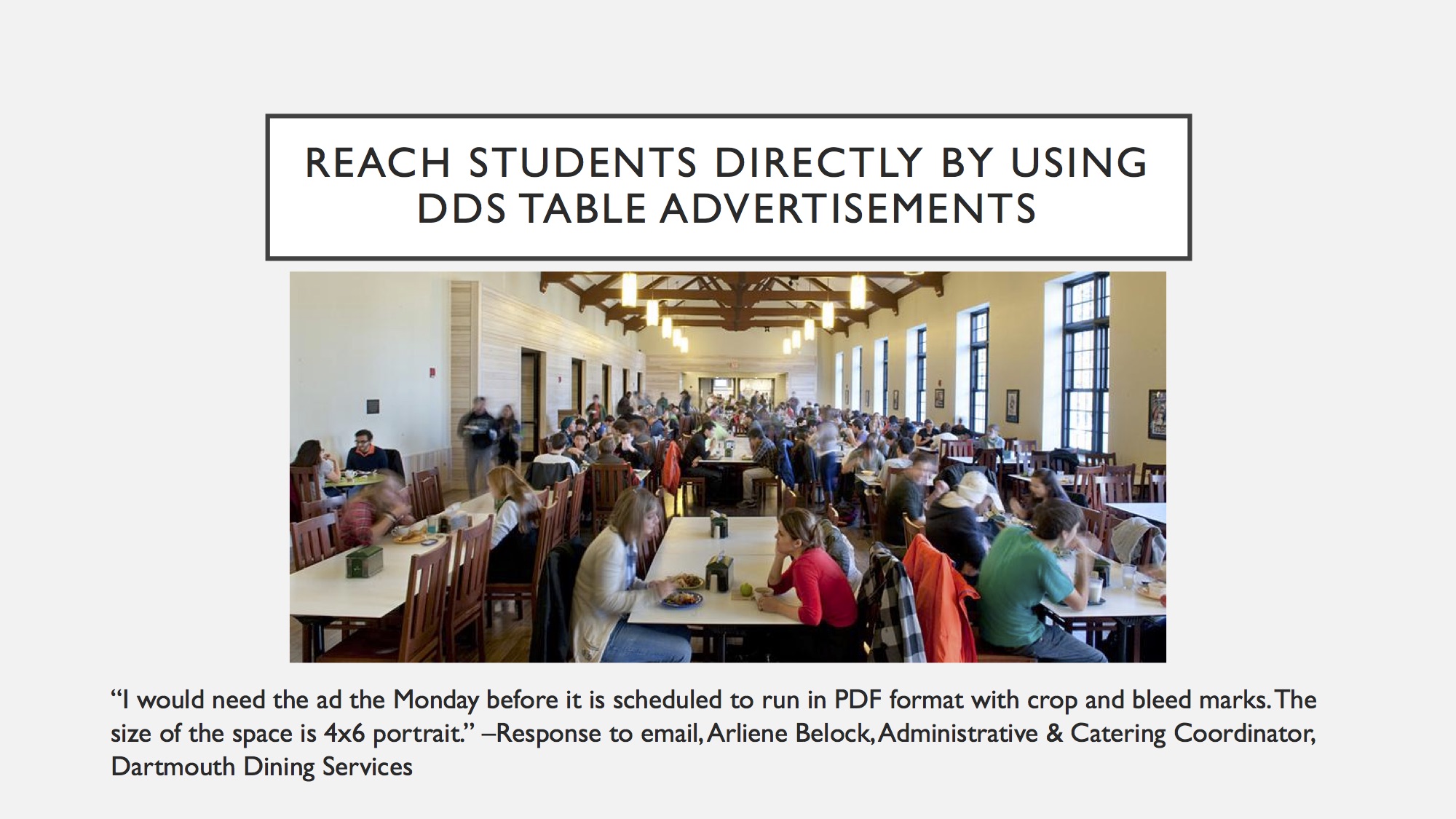Media Outreach
Why is Social Media Useful?
Social media is an effective way to reach students, adults, and other community members. Through social media, the Hanover and Dartmouth community can be educated and informed of the proper uses of the Trescott Property.
How to Set Up a Social Media Account:
Literature Review
This article investigates the role of social media in non-profits, specifically how they compare to older forms of marketing. The co-authors confirm the theory of “Media Richness and Diffusion”, which states that social media’s content-rich outputs are ideal for the dissemination, collaboration, and raising issue awareness that are central to marketing a nonprofit message. They limit their study to Facebook, and view it in the context of non-profits in Libya. The article was invaluable to our proposal for the Trescott Property as it reaffirmed our sense that social media should be the primary motor with which they communicate with their community and partners. (Attouni, Mohamed Aabeid Khalfalla, and Che Su Mustaffa. “How Do Non-profit Organizations in Libya Adopt and Use Social Media to Communicate with The Society.” Procedia – Social and Behavioral Sciences 155 (2014): 92-97. Web.)
This article was important in recognizing the unique importance of people/audience when marketing for a non-profit organization. They pioneer the proposal for the “New Marketing Mix”. In addition to the classic “four P’s”, the authors offer a fifth one: “People”. This informed our marketing strategy for the Trescott Property in important ways. We aimed to keep the content shared on online social spaces as user-friendly and as “bite size” as possible. This study also inspired the potential for emotional rhetoric when marketing Trescott Property’s message. (Blery, Evangelia K., Efstathia Katseli, and Nertilda Tsara. “Marketing for a Non-profit Organization.” International Review on Public and Nonprofit Marketing 7.1 (2010): 57-68. Web.)
Non-profits demand higher levels of entrepreneurial leadership as they are more uniquely focused on “market-orientation towards their clients” (28) than for-profits. (Morris, Michael H. et al. “Antecedents and Outcomes of Entrepreneurial and Market Orientations in a Non-profit Context: Theoretical and Empirical Insights.” Journal of Leadership and Organizational Studies, Vol. 13, No. 4, 2007, pp. 1-25.)
The most important part of using social media effectively when dealing with recreation is using visual rhetoric. Google maps images of the property are key, along with other visual rhetoric mediums, most notably Instagram. Photos taken on the property can be broadcasted in aformentioned forms of visual rhetoric. (Xiang, Zheng, and Ulrike Gretzel. “Role of Social Media in Online Travel Information Search.” Tourism Management 31, no. 2 (2010): 179–188.)
